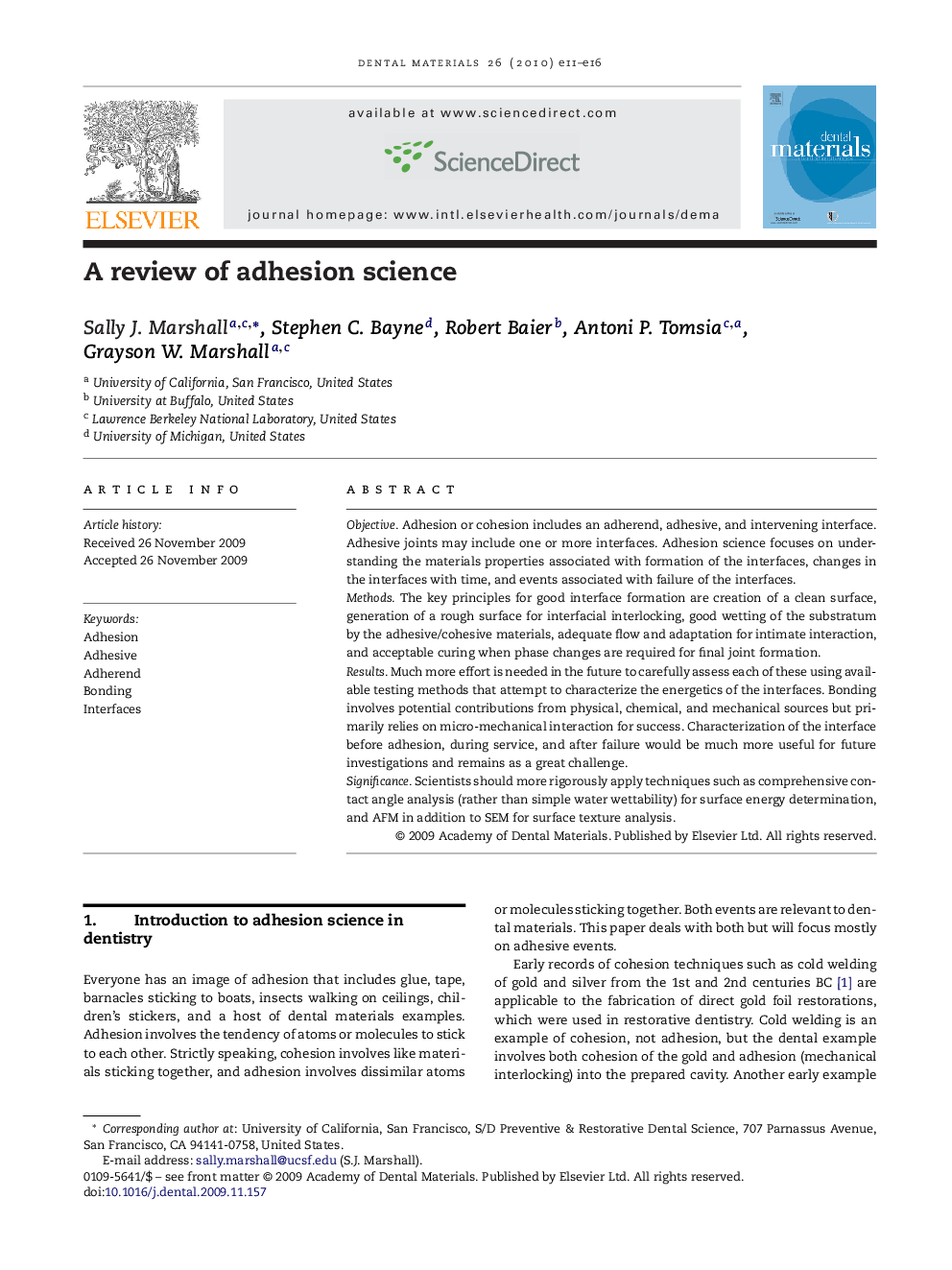| Article ID | Journal | Published Year | Pages | File Type |
|---|---|---|---|---|
| 1422791 | Dental Materials | 2010 | 6 Pages |
ObjectiveAdhesion or cohesion includes an adherend, adhesive, and intervening interface. Adhesive joints may include one or more interfaces. Adhesion science focuses on understanding the materials properties associated with formation of the interfaces, changes in the interfaces with time, and events associated with failure of the interfaces.MethodsThe key principles for good interface formation are creation of a clean surface, generation of a rough surface for interfacial interlocking, good wetting of the substratum by the adhesive/cohesive materials, adequate flow and adaptation for intimate interaction, and acceptable curing when phase changes are required for final joint formation.ResultsMuch more effort is needed in the future to carefully assess each of these using available testing methods that attempt to characterize the energetics of the interfaces. Bonding involves potential contributions from physical, chemical, and mechanical sources but primarily relies on micro-mechanical interaction for success. Characterization of the interface before adhesion, during service, and after failure would be much more useful for future investigations and remains as a great challenge.SignificanceScientists should more rigorously apply techniques such as comprehensive contact angle analysis (rather than simple water wettability) for surface energy determination, and AFM in addition to SEM for surface texture analysis.
